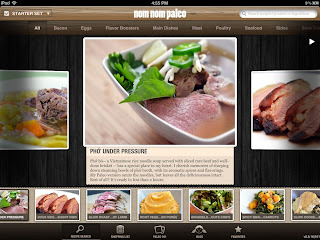Why Tablets Have Become Users’ Most Preferred Device?
“PC sales had dropped to their lowest level in history, with global shipments falling by 10.9 per cent in the second quarter of 2013.” Not only Pcs, sale of notebooks have also dropped drastically.
Do you want to know why?
According to the latest research report from IDC, “Tablet shipments are on target to surpass those of both the laptop and desktop PC by 2015.”
A new study released in May 2013, claimed that tablet shipments will grow 59% this year to 229.3 million units, a figure which is higher than the firm’s forecast for 2013 notebook shipments, and reckons that they will eventually top PC shipments two years later.
It’s no secret; more and more users are turning to mobile devices, such as, tablets and smartphones. These devices are the new toys in the market. Users find these devices more accessible to engage with online content. These on-the-go devices have become everyone’s favorite, including, students, businessmen, professionals and even kids.
Tablet adoption rate
Tablet adoption rate is growing with every year in the U.S and has doubled to 34% adults at the end of May 2013. Pew Research Center surveyed 2,252 adults by telephone from April to May for a new report. And found that tablet adoption rate rose from 18% in 2012 to 34% in 2013. Fig. 1 shows remarkable growth in the tablet adoption rate where, it was as low as 8% two years ago and 3% in 2010.
 |
| Fig. 1 |
According to the latest quarterly report on mobile PC shipments by DisplaySearch, tablet shipments will reach 364 million worldwide in 2014, a figure which is significant because the researcher believes that this will be more than double the 177 million shipments forecast for standard notebook and ultra-slim PCs.
 |
| Fig. 2 |
Major Tablet Platforms
- iOS
- Android
- Windows
- And Blackberry
- Apple iPad and iPad Mini
- Samsung Galaxy Tab, Tab 2
- Google Nexus 7 and 10
- Barnes and Nobles’ Nook
- Amazon’s Paperwhite, Kindle Fire HD, and Fire HD 8.9”
iPad reigned the tablet market and became the first preference of many. But now the Android ecosystem has proved that it could catch up with Apple’s iPad devices. With the introduction of Amazon's Kindle Fire brand and Google's own Nexus 7 series built with mobile OEM partners, there is a surge in the demand of Android devices.
Windows Surface RT and Surface Pro - As per the most recent figures from IDC, “1.8 million Windows 8 tablets were sold in the second quarter of 2013, for a 4% market share. That's compared to a 1% market share the year previous, and a year-over-year growth rate of 527%.”
 |
| Fig. 3 |
The tablet devices forayed in the global market as mere PC companions. But now the devices are dominating all others as users are using them for everything, from checking e-mails and Facebook profiles to playing games and accessing the web.
Why tablets have become users’ most preferred device?
1. Affordable – Tablets are inexpensive. As per a Gartner report, “In emerging markets, inexpensive tablets have become the first computing device for many people, which is accounting for the collapse of the mini notebook market.”
2. Constant connectivity and engagement – Tablets connect and engage users. For instance;
- Brands connect with their potential consumers through various apps and e-commerce sites;
- Users connect with their friends through social media sites and various other chat apps, photo apps such as, Scribbly (fig. 4), Instagram, Pinterest;
 |
| Fig. 4 |
- Students connect with educationists and have access to the glut of information, including newspapers, TV channels, e-books and dictionaries;
- Parents engage their toddlers through various learning apps, such as, Intro to Letters (fig. 5), Intro to Math, Alpha Writer;
 |
| Fig. 5 |
- Travelers connect to the world through apps such as, Lonely Planet's 1000 Ultimate Experience;
- Food enthusiasts look for recipes through apps such as, Nom Nom Paleo (fig. 6)
 |
| Fig. 6 |
For more information on iPhone app developers and app marketing strategy send in your email to marketing@ymedialabs.com
You might also like:
Tablets Vs. Mobile – How Would You Like to Shop in the Future?
Do You Need a Tablet App or Mobile App for Your Retail Business?




.png)





























